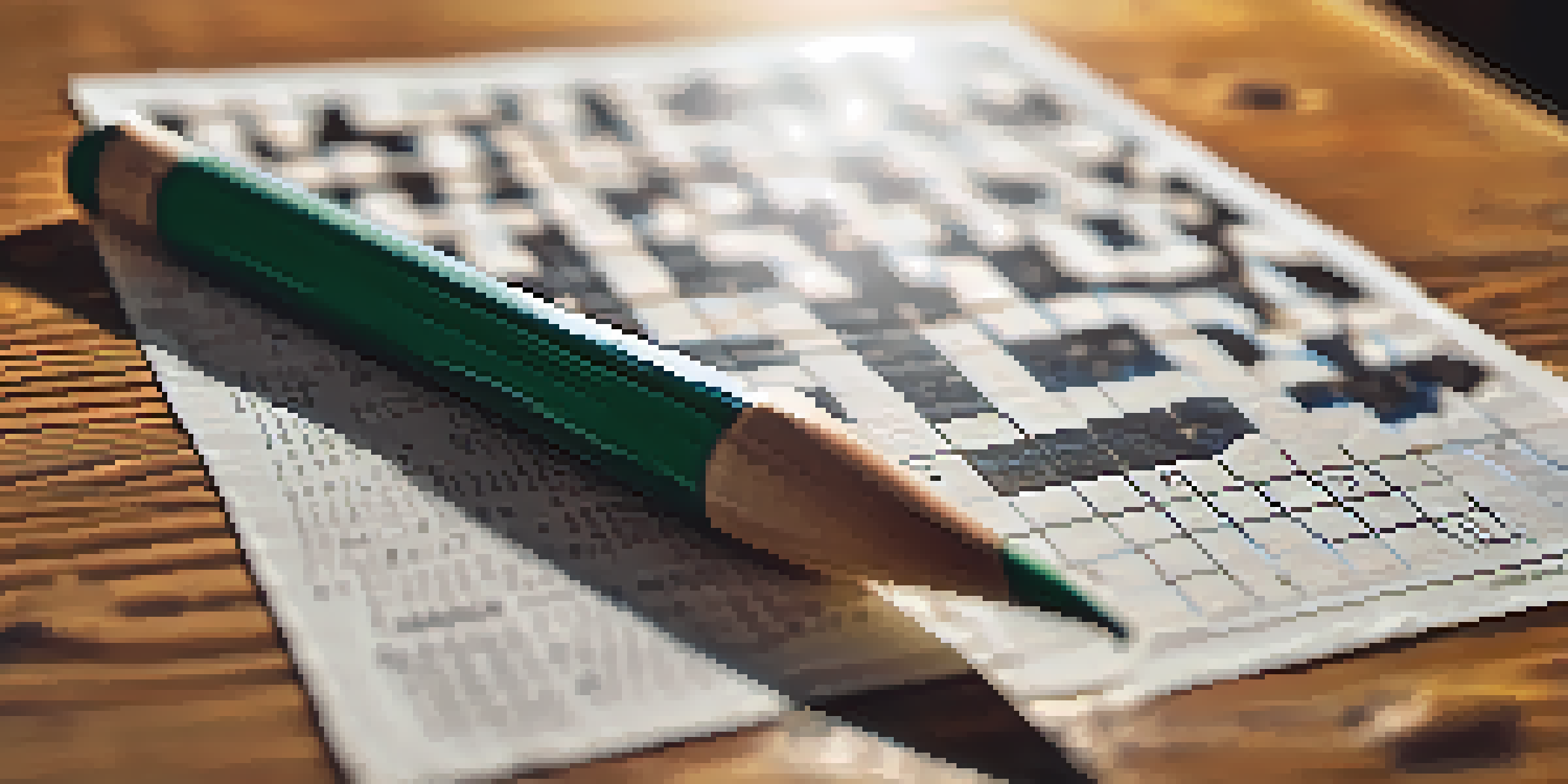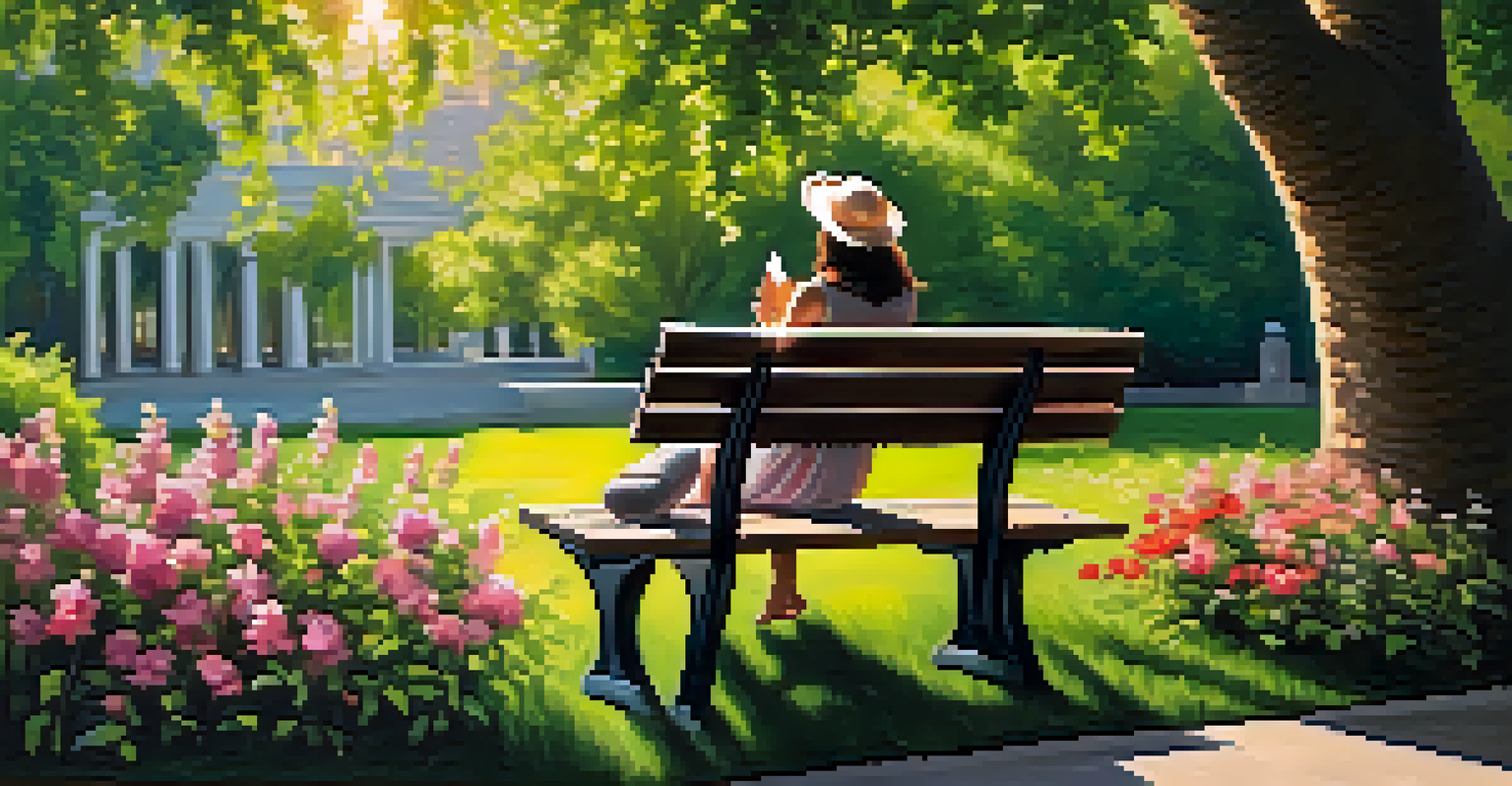Creating Your Own Crosswords: Tips for Beginners

Understanding the Basics of Crossword Construction
Before you dive into creating your own crossword, it's essential to grasp the basics. A crossword puzzle typically consists of a grid filled with words placed horizontally and vertically. Each word corresponds to a clue, which can be straightforward or cryptic, depending on your style. Understanding this structure will help you visualize your grid as you begin crafting your own.
The best part about making crosswords is the joy they bring to the solver, and the creativity they inspire in the creator.
Think of the grid like a canvas for painting; the words are your colors, and the clues are the brushstrokes that bring it all together. The most common size for a beginner's crossword is 15x15, but you can adjust this based on your comfort level. Start by sketching out a simple grid on paper to get a feel for how the words will fit together.
Remember, the joy of crosswords lies in the challenge they present, both for the creator and the solver. As you familiarize yourself with the grid's layout, you'll find it easier to brainstorm words that connect to your clues, paving the way for a fun and rewarding crossword experience.
Choosing a Theme to Guide Your Crossword
A well-defined theme can elevate your crossword from average to exceptional. Themes can range from pop culture references to seasonal holidays or even personal hobbies. For instance, if you love gardening, you might create a crossword filled with plant names and gardening terms, making it relatable and enjoyable for fellow enthusiasts.

Think of your theme as the backbone of your puzzle. It gives a cohesive structure to your clues and answers, making it easier for solvers to engage with your crossword. Once you've chosen a theme, jot down related words and phrases that could fit into your grid, helping you build a rich vocabulary to draw from.
Start with a Strong Theme
Choosing a well-defined theme enhances your crossword's cohesiveness and makes it more engaging for solvers.
Remember, a theme isn't just a decorative touch; it can enhance the solver's experience by providing context and making connections between clues. This not only adds depth to your puzzle but also keeps solvers intrigued and wanting to come back for more.
Brainstorming Words and Clues for Your Puzzle
Once you've got a theme, it’s time to start brainstorming words and clues. This can be the most fun part of the process, as it allows you to think creatively and make connections. Start by listing out potential words that fit your theme, then think about how you can define or describe each one in a clue.
A well-crafted crossword is like a good conversation; it should be enjoyable, engaging, and leave you wanting more.
For example, if one of your words is 'rose', your clue could be 'A popular flower often given on Valentine's Day.' This not only provides a hint but also adds a layer of interest. Keep in mind that clues can be straightforward or playful; it’s all about finding the right tone for your audience.
As you brainstorm, try to think of synonyms, antonyms, or even wordplay that could make your clues more engaging. This exercise not only enhances your creativity but also helps ensure a variety of clue styles, which keeps the puzzle fresh and exciting for solvers.
Creating the Crossword Grid: Layout and Design
Now comes the exciting part: creating your grid! Start by placing your longest words first, as they can help anchor the layout and give you a better idea of where to fit the shorter words. It's helpful to use graph paper or a crossword-making software to visualize your design, allowing for easier adjustments as you go.
When filling in the grid, remember to leave spaces for interlocking words. This is crucial for the crossword's integrity, as it allows solvers to use the letters from one word to help them figure out another. It's like a puzzle within a puzzle, where each piece relies on the others to complete the picture.
Refine Clues for Enjoyment
Crafting clear and balanced clues is essential for creating a delightful challenge that keeps solvers coming back.
Finally, don’t forget to check for symmetry! Traditionally, crosswords have a symmetrical layout, which adds to their aesthetic appeal. This does not mean it must be perfect, but keeping a balance in the design can enhance the overall look and flow of your puzzle.
Refining Your Clues for Clarity and Enjoyment
Once your grid is complete, it’s time to refine your clues. A good clue should be clear and concise, providing just enough information to guide the solver without giving away the answer. Try to strike a balance between challenge and accessibility; you want to engage your audience without frustrating them.
Consider testing your clues by asking friends or family to solve your crossword. Their feedback can provide valuable insights into which clues are too easy or too difficult. This iterative process helps you refine your clues until they resonate with your intended audience.
Remember, the goal is to create an enjoyable experience for the solver. Thoughtfully crafted clues can turn a simple crossword into a delightful challenge that keeps them coming back for more, and that's what makes the effort truly worthwhile.
Testing Your Crossword: The Importance of Feedback
After refining your clues, it's crucial to test your crossword before sharing it widely. This step ensures that everything fits and flows as intended. You can either solve it yourself or ask a few trusted friends to give it a try. Their reactions will help you identify any awkward clues or grid inconsistencies.
Testing is not just about finding errors; it's also about understanding the solver's experience. Pay attention to where they struggle or breeze through—this feedback is invaluable for future puzzles. You might discover that some clues need to be rephrased or that certain words are too obscure for your audience.
Test and Share Your Puzzle
Testing your crossword and gathering feedback helps improve the puzzle's quality and fosters community engagement.
Ultimately, feedback can transform your crossword from a personal project into a communal activity. It fosters a sense of connection and shared enjoyment, which is at the heart of why we create puzzles in the first place.
Sharing Your Completed Crossword with the World
Once you’re satisfied with your crossword, it’s time to share your creation! There are several platforms available where you can publish your puzzles, from personal blogs to dedicated crossword websites. Social media can also be a great way to reach an audience, allowing you to connect with fellow crossword enthusiasts.
Consider creating a small launch event, whether virtual or in-person, where you can present your crossword and engage with solvers. This not only makes the experience more interactive but also builds a community around your work. Sharing your passion can inspire others to try their hand at creating their own puzzles too.

As you share your crossword, be open to feedback and suggestions. The more you engage with your audience, the more you'll learn about what resonates with them. This ongoing dialogue can enrich your future crossword projects and foster a vibrant puzzle-making community.